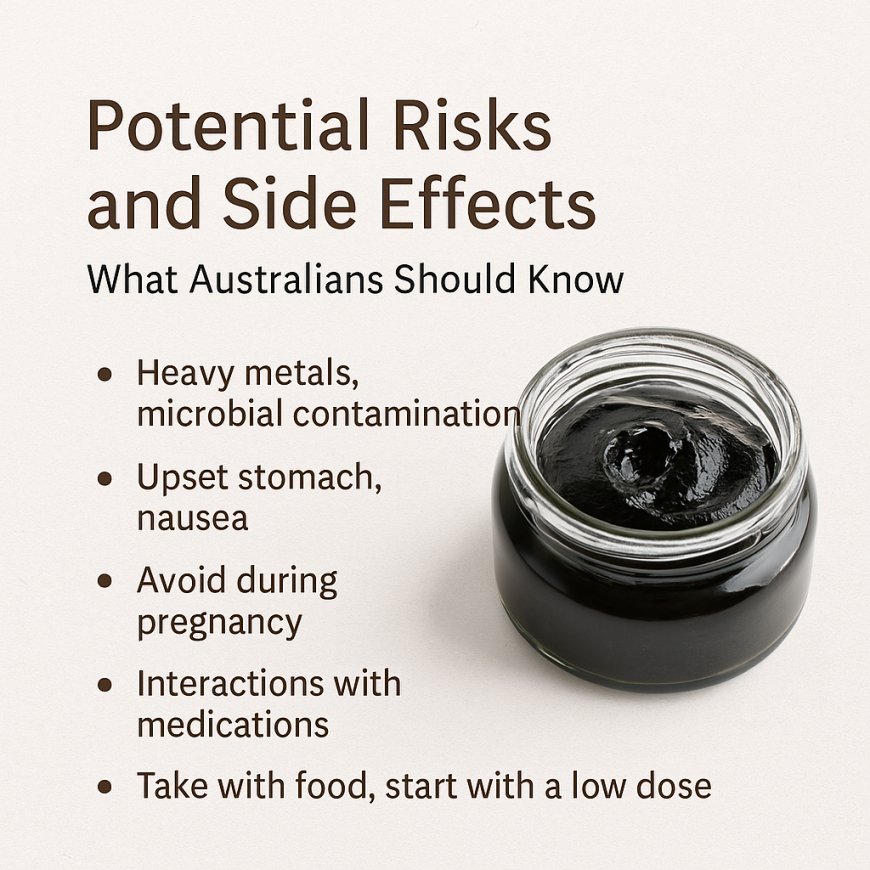Potential Risks and Side Effects: What Australians Should Know
Learn about the potential risks and side effects of Shilajit. Essential safety tips for Australians considering natural health supplements.

Natural health products like Shilajit are gaining popularity across Australia, and for good reasonthey offer a holistic way to support energy, immunity, and well-being. But just because something is natural doesnt mean its always risk-free. This article explores potential risks and side effects: what Australians should know before adding Shilajit to their routine.
Whether you're new to herbal supplements or already deep into natural wellness, understanding these risks can help you make safer and more informed decisions.
Not All Shilajit Is Created Equal
One of the most important things to know is that not every product labeled "Shilajit" is pure or safe. Some imported productsespecially those that are not properly filtered or testedmay contain:
- Heavy metals like lead, mercury, or arsenic
- Microbial contamination (bacteria or fungi)
- Harmful fillers or artificial binders
Australians are strongly encouraged to buy only from reputable brands that provide independent lab test results. Look for products approved by the Therapeutic Goods Administration (TGA) or at least tested by certified labs.
Common Side Effects (When Quality Is an Issue)
Even high-quality Shilajit can cause mild side effects in certain people, especially when taken in excess or on an empty stomach. Here are a few to watch for:
- Upset stomach or nausea
- Diarrhoea or loose stools
- Dizziness or a feeling of "heat" in the body
- Headaches, especially when first starting
These symptoms often resolve on their own after a few days, or when the dosage is adjusted. Starting with a low doseabout the size of a grain of riceis a safe approach.
Who Should Avoid Shilajit?
Some groups should use caution or avoid Shilajit entirely. These include:
- Pregnant and breastfeeding women There is not enough scientific data to confirm safety during pregnancy or lactation.
- People with gout or high uric acid Shilajit may worsen symptoms due to its mineral content.
- Those on certain medications Shilajit may interact with blood pressure drugs, diabetes medication, and hormone therapies. Always check with your GP or integrative health provider.
If you have a diagnosed medical condition or take prescription medications, speak with your healthcare professional before starting Shilajit.
Safe Usage Tips for Australians
To reduce the risk of unwanted side effects, keep the following in mind:
- Choose resin over capsules or powders, as it is typically less adulterated.
- Take Shilajit with food to prevent digestive discomfort.
- Store it properly in a cool, dry placeheat and humidity can degrade quality.
- Cycle usage: Try using it for 68 weeks followed by a short break to allow your body to reset.
Conclusion
In the world of supplements, being well-informed is your best defence. Knowing the potential risks and side effects: what Australians should know about Shilajit ensures you can use this powerful natural substance safely and responsibly. Its a valuable toolbut like any tool, it works best when used with care, respect, and proper guidance.
If you're searching for reliable information on Shilajit, we hope this guide has been helpful. But if you're ready to try one of the best Shilajit brands in Australia, consider Opure Shilajit a trusted choice among health-conscious users.
What sets Opure apart?
- Sourced at 17,000 ft altitude from the Himalayan region
- 88% fulvic acid for maximum potency
- Rich in 85+ trace minerals essential for cellular health
- 30-day money-back guarantee for peace of mind
- Free worldwide shipping, making it accessible wherever you are
With such a strong commitment to purity, transparency, and customer satisfaction, Opure Shilajit truly offers a premium experience. If you're serious about your wellness journey, this is a brand worth considering.




























